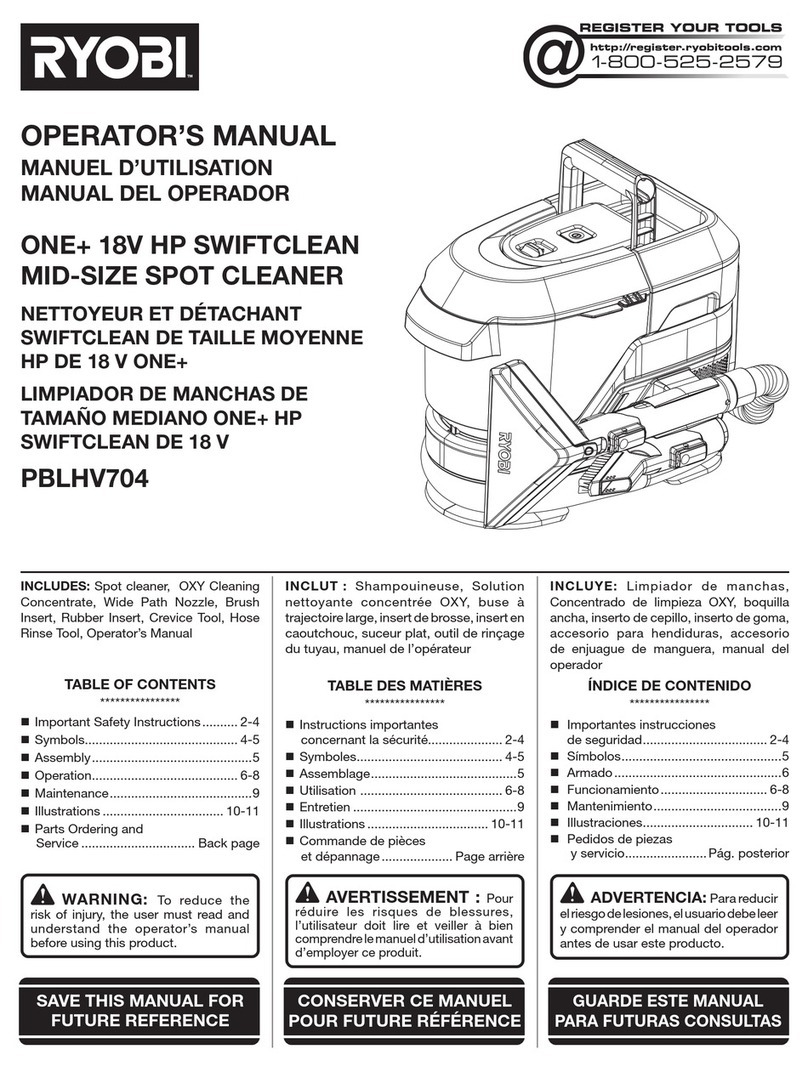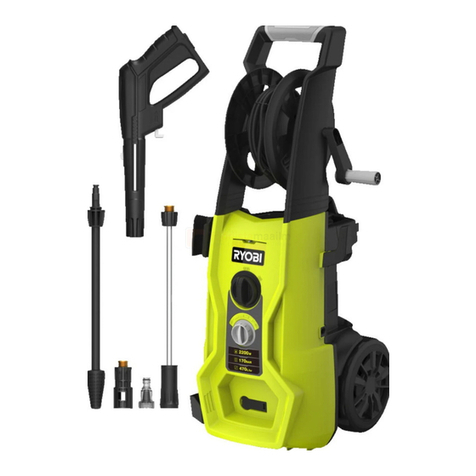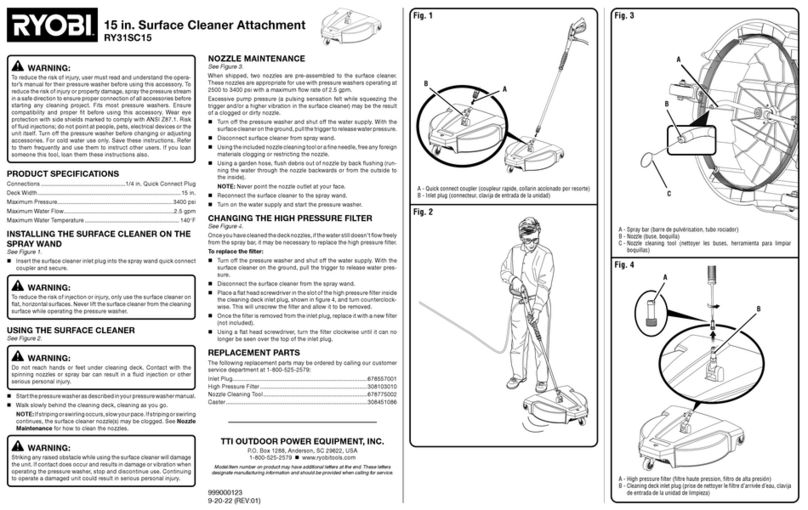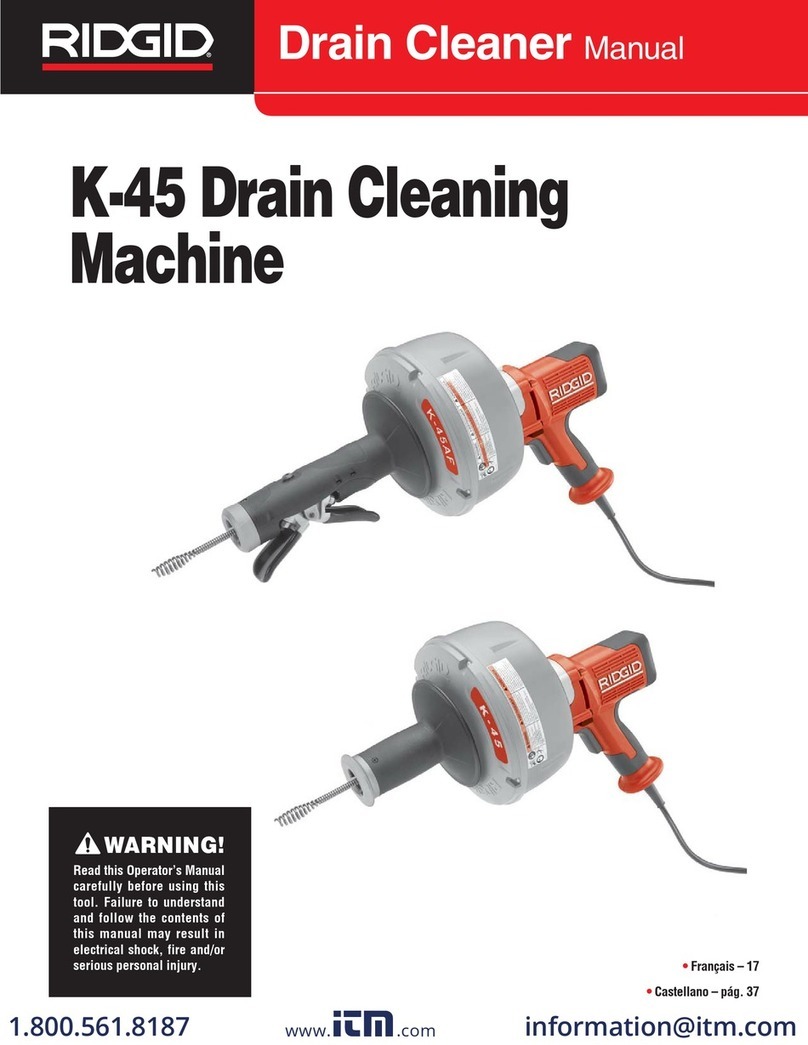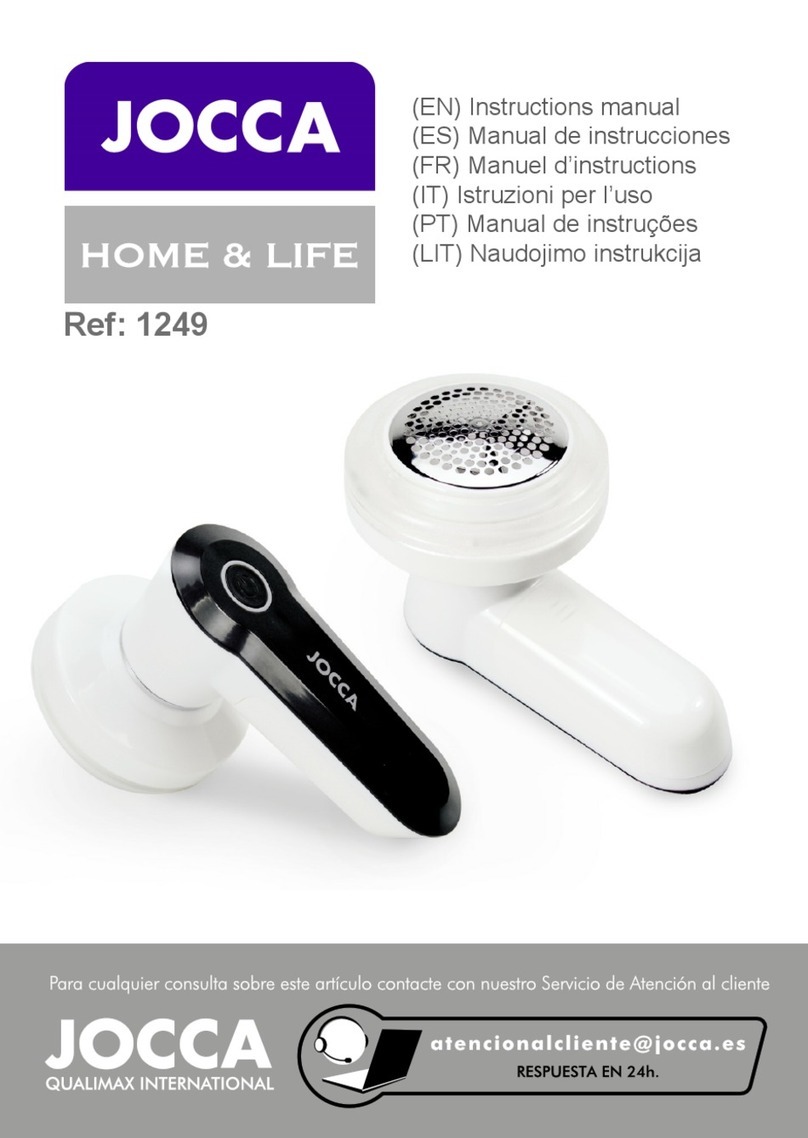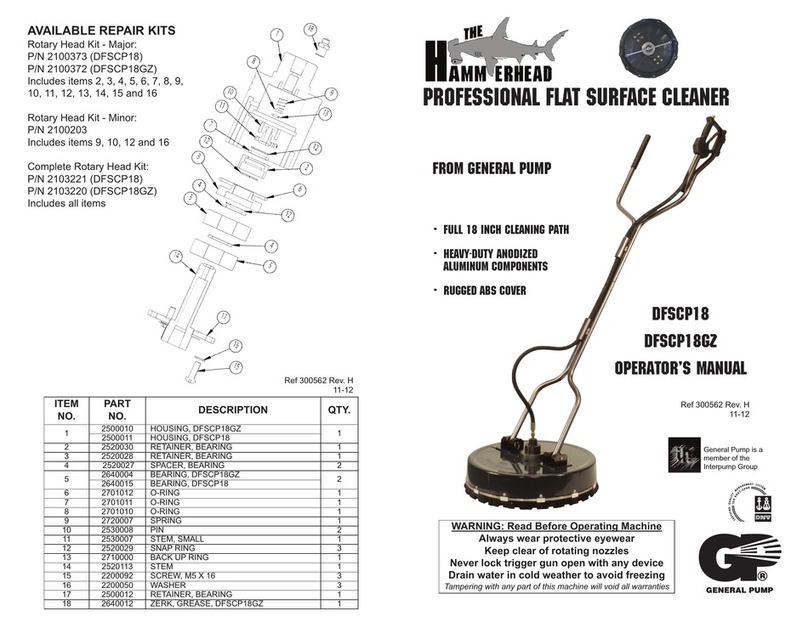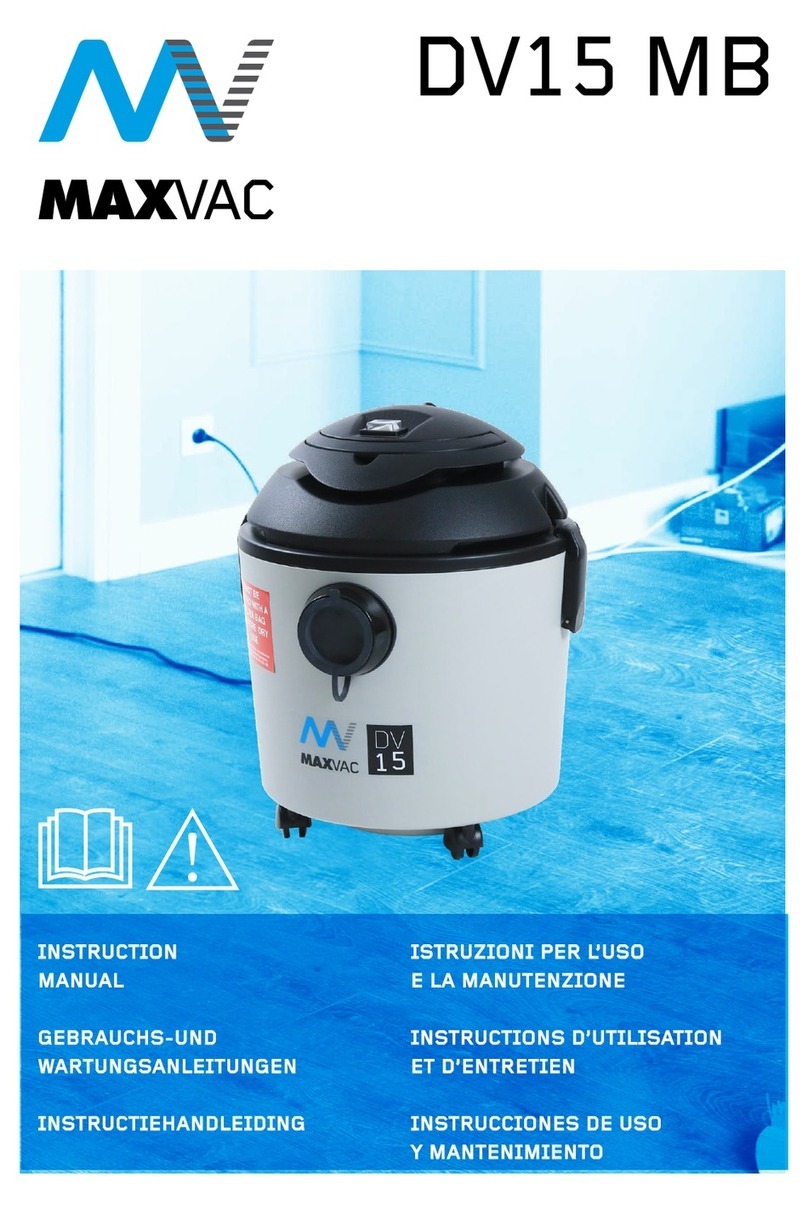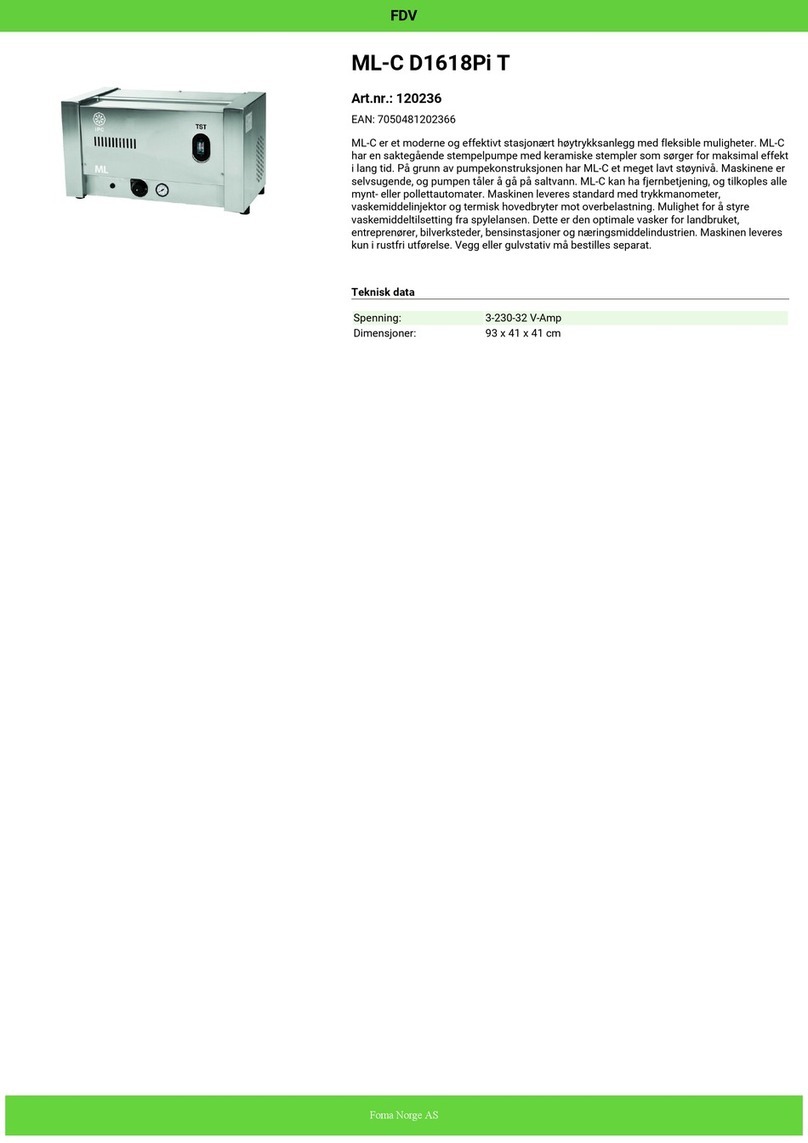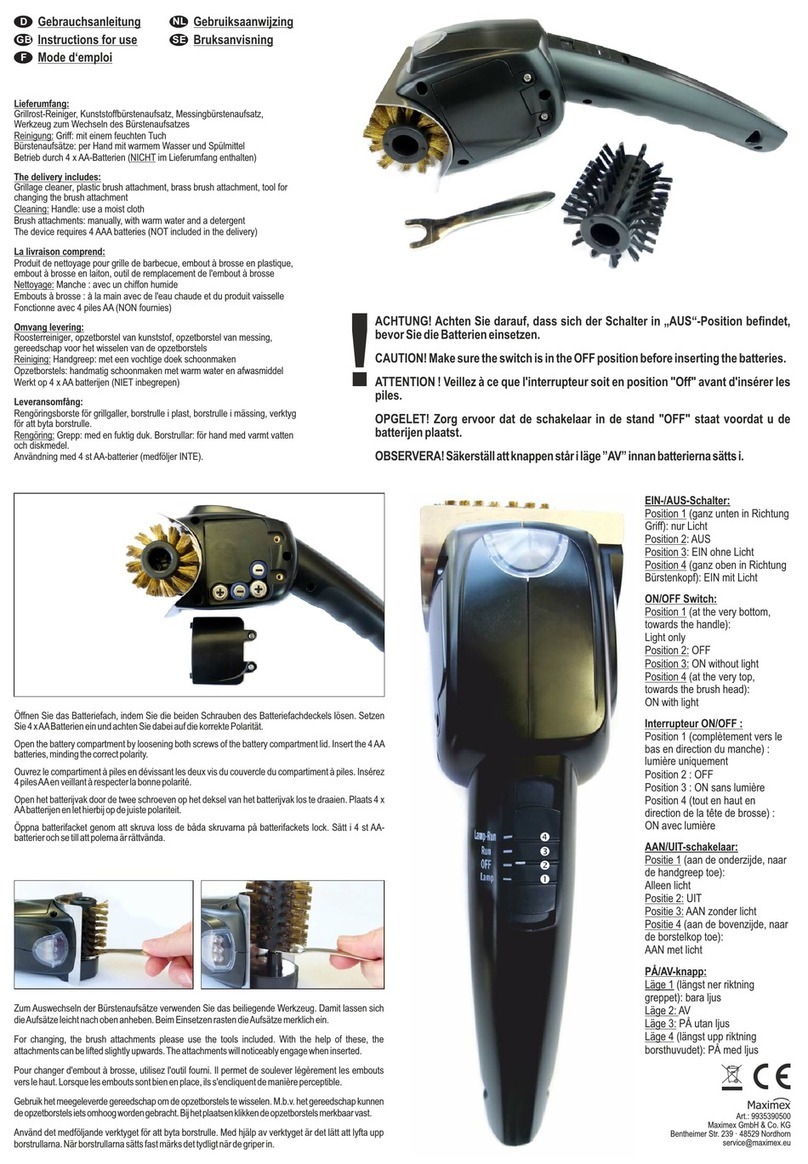
2
■Store idle power tools out of the reach of children
and do not allow persons unfamiliar with the power
tool or these instructions to operate the power tool.
Power tools are dangerous in the hands of untrained
users.
■Maintain power tools and accessories. Check for
misalignment or binding of moving parts, breakage
of parts and any other condition that may affect the
power tool’s operation. If damaged, have the power
tool repaired before use. Many accidents are caused
by poorly maintained power tools.
■Keep cutting tools sharp and clean. Properly
maintained cutting tools with sharp cutting edges are
less likely to bind and are easier to control.
■Use the power tool, accessories and tool bits etc.
in accordance with these instructions, taking into
account the working conditions and the work to
be performed. Use of the power tool for operations
different from those intended could result in a
hazardous situation.
■Keep handles and grasping surfaces dry, clean,
and free from oil and grease. Slippery handles and
grasping surfaces do not allow for safe handling and
control of the tool in unexpected situations.
BATTERY TOOL USE AND CARE
■Recharge only with the charger specified by the
manufacturer. A charger that is suitable for one type
of battery pack may create a risk of fire when used with
another battery pack.
■Use power tools only with specifically designated
battery packs. Use of any other battery packs may
create a risk of injury and fire.
■When battery pack is not in use, keep it away from
other metal objects, like paper clips, coins, keys,
nails, screws or other small metal objects, that can
make a connection from one terminal to another.
Shorting the battery terminals together may cause
burns or a fire.
■Under abusive conditions, liquid may be ejected
from the battery; avoid contact. If contact
accidentally occurs, flush with water. If liquid
contacts eyes, additionally seek medical help.
Liquid ejected from the battery may cause irritation or
burns.
■Do not use a battery pack or tool that is damaged or
modified. Damaged or modified batteries may exhibit
unpredictable behaviour resulting in fire, explosion or
risk of injury.
■Do not expose a battery pack or tool to fire
or excessive temperature. Exposure to fire or
temperature above 130°C may cause explosion.
■Follow all charging instructions and do not charge
the battery pack or tool outside the temperature
range specified in the instructions. Charging
improperly or at temperatures outside the specified
range may damage the battery and increase the risk
of fire.
SERVICE
■Have your power tool serviced by a qualified repair
person using only identical replacement parts.
This will ensure that the safety of the power tool is
maintained.
■Never service damaged battery packs. Service
of battery packs should only be performed by the
manufacturer or authorized service providers.
CORDLESS SURFACE CLEANER SAFETY
WARNINGS
■Never allow children, persons with reduced physical,
sensory, or mental capabilities or lack of experience
and knowledge,or people unfamiliar with these
instructions to use the product.
■Use the product in daylight or with good artificial light.
■Keep proper footing and balance at all times, and be
sure of proper footing on slopes.
■Do not walk backwards when using the product.
■Walk, never run.
■Keep the head attachment below waist level.
■Never operate the product with damaged guards or
without the guards in place.
■Keep hands and feet away from the cleaning means at
all times and especially when switching on the motor.
■Turn off the product and remove the battery pack. Make
sure that all moving parts have come to a complete
stop:
●before servicing
●before leaving the product unattended
●before clearing a blockage
●before checking, cleaning, and working on the
product
●before changing accessories
●after striking a foreign object
●whenever performing maintenance
●whenever the product starts to vibrate abnormally
■Wear full eye and hearing protection while using the
product. If working in an area where there is a risk of
falling objects, head protection must be worn.
■Hearing protection may restrict the operator’s ability
to hear warning sounds. Pay particular attention to
potential hazards around and inside the working area.
■Always ensure that ventilation openings are kept clear
of debris.
■Before use and after any impact, check that there are
no damaged parts. A defective switch or any part that is
damaged should be properly repaired or replaced by an
authorised service centre.
■Do not modify the product in any way. This may
increase the risk of injury to yourself or others.
■Immediately turn off and remove the battery pack in
the event of accident or breakdown. Do not operate
the product again until it has been fully checked by an
authorised service centre.
■Always test the product on the material to be cleaned
prior to starting full operation.
